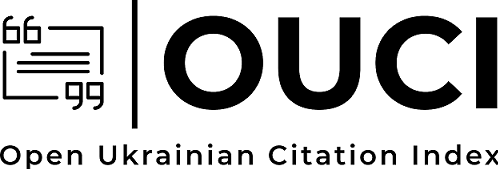Peculiarities of the Sunni-Shiite Сonfrontation during the Arab Spring
DOI:
https://doi.org/10.28925/2524-0757.2022.16Keywords:
Arab Spring, Sunnis, Shiites, “Muslim Brotherhood”, Government of National Consent, Islam, foreign policyAbstract
The article reveals the main features of the Sunni-Shiite confrontation during the events of the Arab Spring. In particular, the author of the article notes that one of the main results of the Arab Spring was the collapse of the ruling regimes in a number of Arab countries, which was accompanied by the growth of Islamic radical ideologies. Under these circumstances, the factor of Sunni-Shiite confrontation is becoming more and more radical during these events, which has resulted in a series of armed confrontations between members of both faiths. The author of the article also argues that despite all its complexity and contradictions, the events of the Arab Spring have led to a complete change in the political map of the Middle East. Рolitically, these countries are undergoing a complete reform of the Arab East, due to the change from secular to religious, which was embodied by Sunni-oriented regimes. At the same time, as the course of events showed, Islamist organizations did not become the main organizing force in the protest movement in the Arab countries and were not its instigators. However, in many countries, it is the moderate Islamist parties that have come to power as a result of the election due to their strong influence on the general population of the Middle East. The Arab Spring has also shown that the actions of the modern and most educated part of society against dictatorship and harsh authoritarianism do not necessarily lead to democratic change in these societies. In a traditional society, forces that do not share liberal values and are unable to offer a frustrated and embittered population a democratic alternative have entered the political arena. All this in general not only did not solve the main domestic and foreign policy problems of the Middle East, but on the contrary led to their further aggravation. At the same time, the factors of the Sunni-Shiite confrontation in the region were increasingly used by various political forces of these countries to solve their own interests.
Downloads
References
Crone, P., & Hinds M. (1986). God’s Caliph: Religious Authority in the First Centuries of Islam. Cambridge [in English].
Fares, V. (2012) Revoliutsiia griadet: borba za svobodu na Blizhnem Vostoke. Moskva: Eksmo-Press [in Russian]. Jreisat, J. A. (2016) Te Arab World: Reform or Stalemate. Journal of Asian and African Studies, 41 (5–6), 411–437 [in English].
Mahayudin, H. Ya. (2015). Te Social and Political Background of the ‘Abbasid Revolution: Te Rise of the ‘Abbasid Caliphate. International Journal of Humanities and Cultural Studies 2 (3), 831–842 [in English]. https://www.ijhcs.com/index.php/ijhcs/article/viewFile/425/422
Perazzo, B. (2012). Policy Brief: On Being Shia in Saudi Arabia. A survey looking into the lives of Saudi Arabia’s second-class citizens. Institute for Gulf Affairs [in English]. https://www.gulfinstitute.org/wp-content/pdfs/shialifeinsaudiarabia.pdf
Ragimova, A. F. (2008). Politizatsiia islama v sovremennoi istoriografii. In E. I. Havanov (Comp.) Istoriografiia obshchestvennykh i politicheskikh dvizhenii v XX stoletii: tendentsii i problemy. Moskva [in Russian].
Tiel, T. (2012). Aſter the Arab Spring: Power shiſt in the Middle East?: Yemen’s Arab Spring: From youth revolution to fragile political transition. In N. Kitchen (Ed.) IDEAS reports – special reports, pp. 43–47, London: LSE IDEAS, London School of Economics and Political Science [in English].
Tombaugh, W. N. (2013). Te Rise and Fall of the Muslim Brotherhood in the Egyptian Revolution: Te Interplay of Narrative and Other Factors. 62 p. [in English]. https://kuscholarworks.ku.edu/bitstream/handle/1808/12263/Tombaugh_ku_0099M_12986_DATA_1.pdf;js essionid=02C7D7A1F6ACE998A16EE8C0BFA72A1F?sequence=1
Yakovlev, A. I. (2013) Arabskiiy Vostok pered vyzovami sovremennogo mira. In A. B. Podtserob (Ed.) Blizhnii Vostok: vyzovy XXI veka, pp. 126–134, Moskva: Institut Blizhnego Vostoka [in Russian]. Zubaida, J. (2017). Converting One’s Religion in Lebanon. [in English]. https://medium.com/@zubaidajamal/converting-ones-religion-in-lebanon-f92c8c314a8a
Published
How to Cite
Issue
Section
License
Copyright (c) 2022 Максим Ходжін

This work is licensed under a Creative Commons Attribution-NonCommercial-ShareAlike 4.0 International License.
Authors who publish in this journal retain the right of authorship of the work and give to the journal right of first publication of this work under the conditions of Creative Commons: Attribution-NonCommercial-ShareAlike 4.0 International (CC BY-NC-SA 4.0), which allows others freely distribute the work published with reference to the authors of the original work and the first publication of this magazine.














